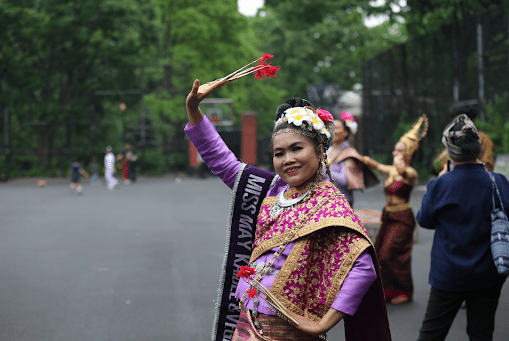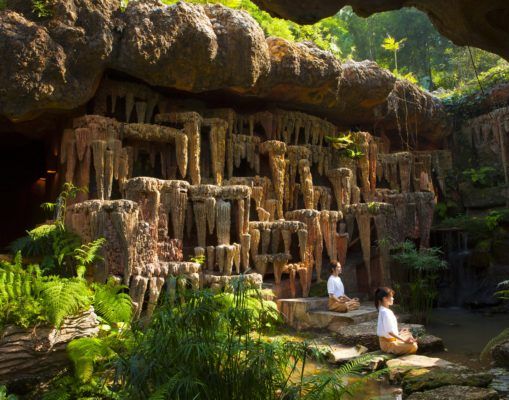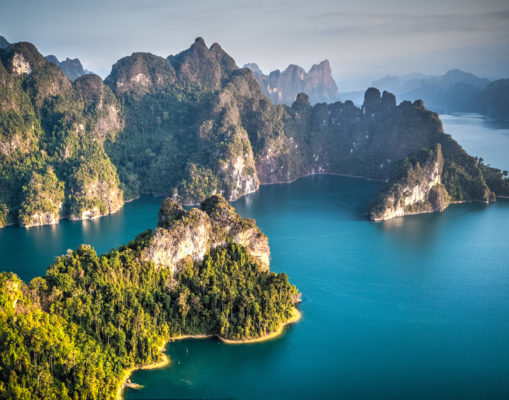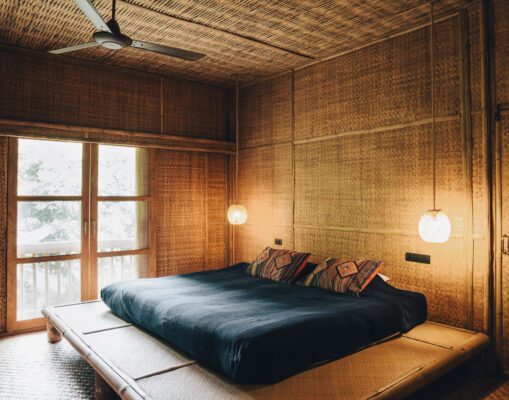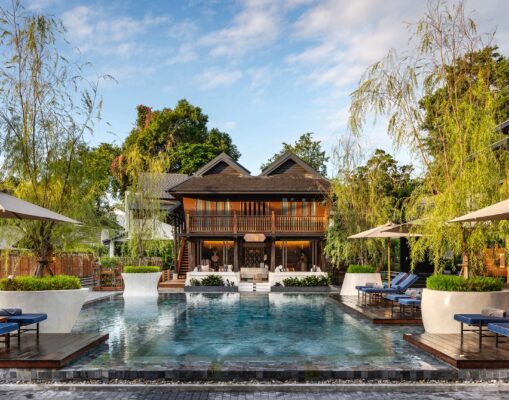Exploring Northern Thailand’s Largest Province
Known as the Land of Misty Mountains in Northern Thailand, the city of Chiang Mai was founded in 1296 as the capital of the Lanna Kingdom and remained so until 1558.
Home to terrific temples, cultural richness, and natural beauty as a travel destination, Chiang Mai has embraced modernization while succeeding in maintaining its laid-back old city vibes. There are several activities visitors should experience when they visit Chiang Mai. They can indulge in the concept of “slow living” when they explore Chaing Mai’s mountainous wonders in one of many well-maintained national parks. Visitors can also enjoy delectable local dishes, and get a first-hand experience of traditional cooking, as well as immerse themselves in a realm of arts and crafts the city is known for. With modern architectural designs popping up alongside century-old monasteries, Chiang Mai successfully merges the past and the present as the city continues to preserve the former and embrace the latter.
It’s quite an understatement to say that Chiang Mai has it all for everyone. Appealing to a diverse range of tastes, Chiang Mai attracts young generations and seasoned travelers, general shoppers and artifact aficionados, natural explorers and keen adventurers, and cultural geeks and hipsters. The enchanting city is a heaven for epicures who prefer their meals to be of specific standards, including that of Michelin’s and street food lovers who enjoy an authentic taste of local cuisine.
Voted as one of the most famous cities in the world by travel publications like Travel and Leisure and TripAdvisor, Chiang Mai is the gateway to the north with easy connections to neighboring provinces and a growing aviation hub linking Thailand and countries in the Asian region.
With an average temperature of 25°C, which is cooler than the rest of the country, it welcomes tourists throughout the year, especially during the Songkran Festival in April. The high tourism season starts from November till February — typically the best time to visit when the cold weather attracts both locals and international travelers.
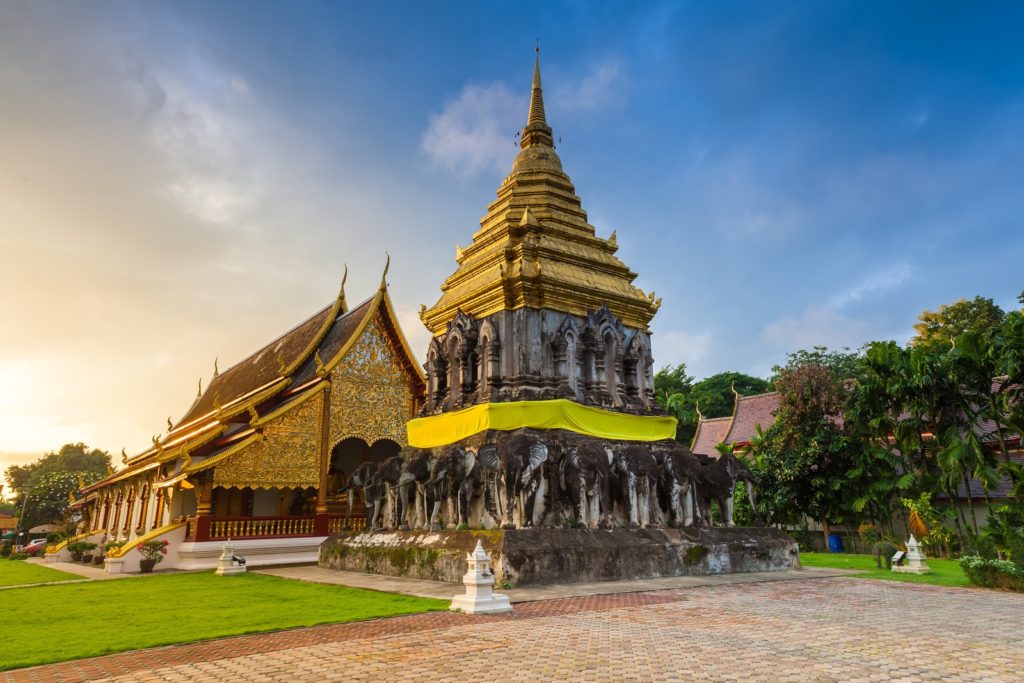
13 THINGS TO DO IN CHIANG MAI
1. A Journey to the Past inside the Ancient Walled City
The ancient walled city of Chiang Mai was the center of the Lanna Kingdom when King Mengrai the Great founded the city in 1296. Apart from being the cultural core of the north for centuries, with Chiang Mai celebrating its 700th anniversary in 1996, the area within the wall embodies the heart of Buddhism, as it expanded to the region with many temples in the area built during the reign of the founder king. Some must-visit sites include Wat Chiang Man, the first temple in Chiang Mai, Wat Chedi Luang, and Wat Phra Singh. The old town is complete with accommodations of varying luxury and comfort. Being vibrant and dynamic, the town is like a living museum keeping its status as the cultural and religious center since the city was founded. A lot happens to take place within and around this ancient walled town. You can survey the area on foot as much as you can. For a change, try the sightseeing tour by a small green bus with a guide to explain the background history of this beloved city. The over-an-hour-long tour will widen your perspective of the city, and part of the proceeds will be used for a good cause to fund the project to preserve green areas in the province as well as the trees around the moat, most of which have a green ribbon tied around it. The service was established in 2016. The tour with some stops at prominent locations along the route is arranged between 9 AM – 11 AM and between 1 PM -2 PM. The fee is 200 Baht.
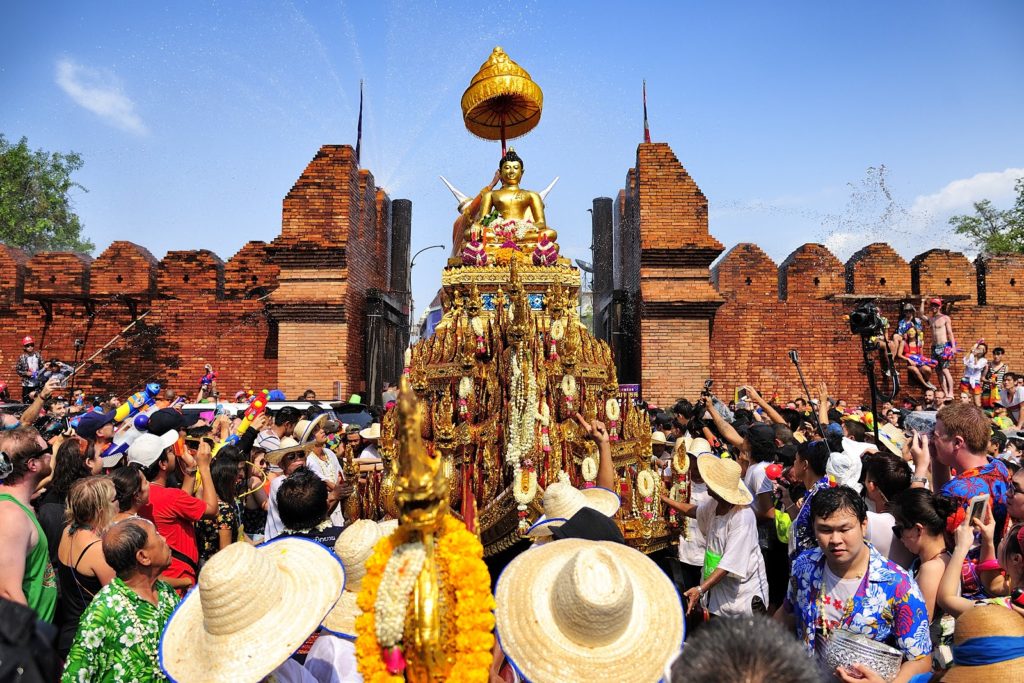
2. Splashing Songkran Festival
As far as the weather is concerned, the cool breeze, chilly air, and clean ozone in the hilly areas are the main reasons locals choose Chiang Mai over other destinations for trips, especially from November to February. Yet the temperature rises to searing levels during the hot season, especially in April. Locals beat the heat with the renowned Songkran Festival, which has become internationally famous. Once you experience the festival, you’ll understand why the city is known as one of the best places to enjoy the holiday.
The Songkran Festival in Chiang Mai is held between April 13th-15th. Weeks before the Thai New Year’s celebration, lavish decorations can be spotted in temples with colorful flags and paper lanterns as symbols of the forthcoming holiday. You can buy flags and lanterns and put them on display at a temple for prosperity. These monasteries allow locals and visitors to be part of a series of activities held during the long holiday. Traditional Songkran’s multitude of festivities include locals carrying some sand into a nearby temple where they will make sand chedis and other monastic structure replicas. Traditionally, sand was brought to the temples during important holidays to replace grains local villagers unintentionally took out of the temples with their feet on their way back home. Taking sand away from temples was regarded as theft, and bringing sand back to temples is an act to redeem themselves. This tradition still carries on today. Other activities include providing food alms to monks, bathing Buddha statues, and ‘rod nam dam hua,’ or pouring water over the hands of senior relatives asking for their blessings to start the new year positively.
Witness the Songkran splendor at main temples like Wat Phra Singh, Wat Chedi Luang in Muang District while Wat Ton Kwen in Hang Dong district often organizes special activities worth checking out during long holidays.
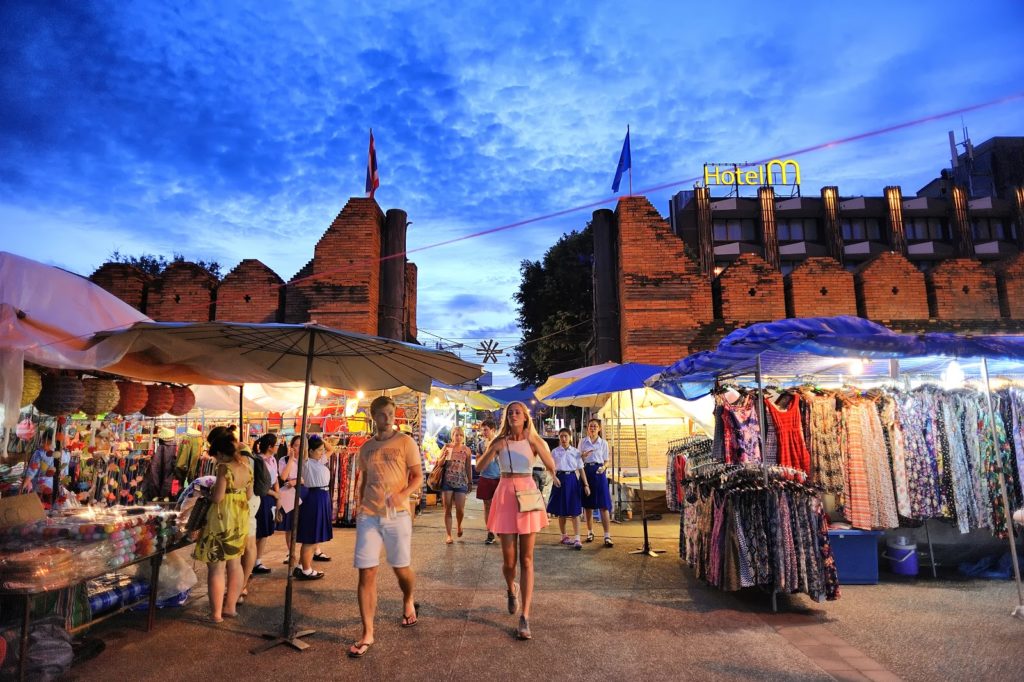
3. Tha Pae Gate: one of Chiang Mai's top landmarks
For local visitors, Tha Pae Gate is one of the more picturesque landmarks of the province. Tha Pae is one of the five ancient gates protecting the inner city of the Lanna Kingdom, having been collectively registered as a National Historic Site in 1935. Tha Pae is the only gate with ‘kuang’ or a spacious square for walking, chilling out, and taking photos. On special occasions, activities will be held, including the New Year’s Eve Celebrations.
Part of the crumbling city wall, the gate is the central point, and one of the more popular hangout areas in Chiang Mai drawing visitors from morning till late at night. It connects you to the city’s main attractions, including the Night Bazaar, the old city, and the moat. The gate is also the starting point of the renowned Tha Pae Walking Street, which is open on Sundays.
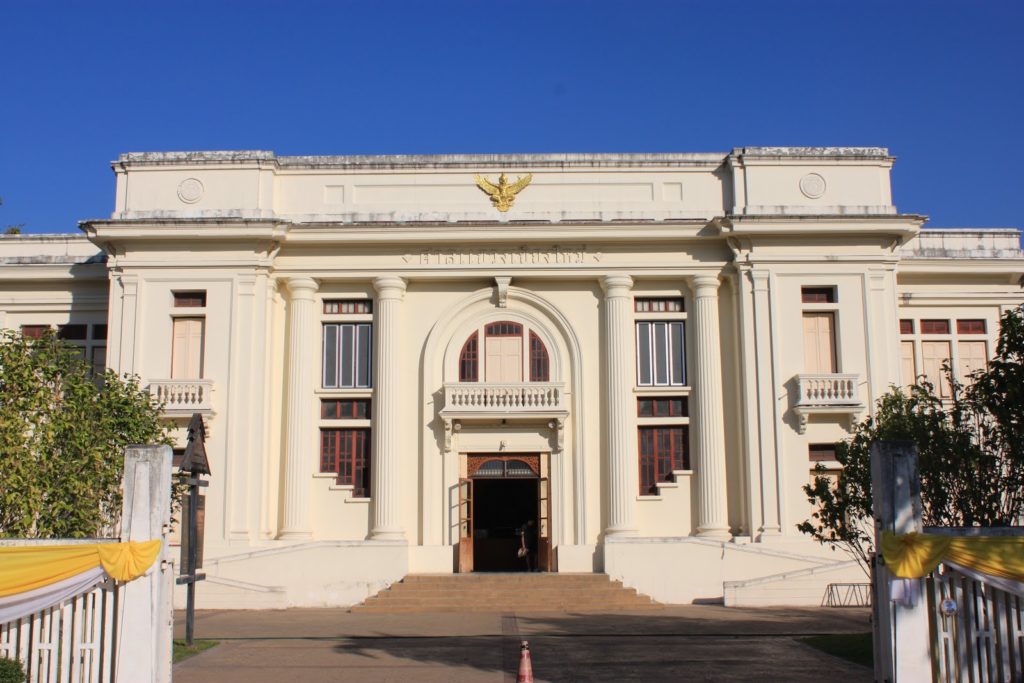
4. Cherishing Chiang Mai's Heritage Through Museum Tours
Rich in culture, Chiang Mai’s history is thoroughly displayed in a couple of museums inside the walled city, including the Lanna Folklife Museum and the Chiang Mai Arts and Cultural Center.
The tour starts at the Chiang Mai Historical Center, educating visitors how the city was built on the foot of Doi Suthep until the decay period of the Mengrai Dynasty when it was ruled by the Burmese. Multimedia utilization makes touring around more enjoyable. Archaeological findings underneath the museum point to that it was part of the original wall of the Emerald Buddha Temple built within the wall of the Royal Palace.
The Chiang Mai City Arts & Cultural Centre uses multimedia to present visitors to the origins of Chiang Mai’s identity. The Best of Chiang Mai room features some of the best inventions the city has to offer, including the Bo Sang Umbrella, Lanna Folk Toys, San Kamphaeng porcelain, and silk textile. In contrast, the Life on the Hill room displays some of the hill tribe cultural heritage that still lives on today.
Last but not least is Lanna Folklife Museum features everything from the Buddha Image Hall, the Lanna Worship Offering, Lanna Scripture, and Textiles to the history of the building itself.
All three museums are located on Prapokklao Road, Chiang Mai Old City and are open Tuesday through Sunday from 08:30 AM – 5:00 PM. The admission fee is 90 Baht for each museum or just buy a package tour for the three premises for 120 Baht.
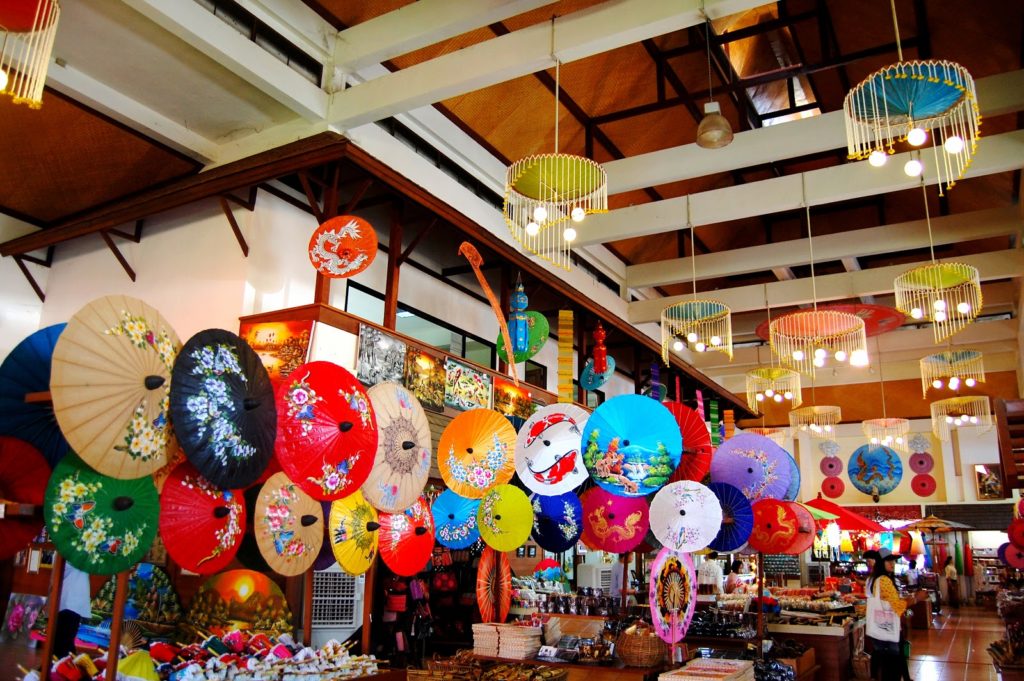
5. Into the World of Arts & Crafts at San Kamphaeng District
When visiting Chiang Mai, there’s a lot of buying and products worth surveying if you happen to be in the mood of shopping. Arts and crafts here are unique, and most of them are locally produced. In San Kamphaeng, for instance, the Bo Sang Village has been long famous for its umbrellas, parasols, paper lamps, and fans for decades. During non-harvest seasons, villagers used to make umbrellas with natural products as various parts, including bamboo strips, softwood, natural latex, and rice paper. Currently, acrylic paints are used instead of natural colors. The Bo Sang Handicraft Center now provides an accommodation service apart from being the leading manufacturing source for these products.
Not far from this spot, visitors can check-in at two pottery shops that sell the most exquisite pottery in the region known as Celadons. Siam Celadon and Ban Celadon makes the San Kamphaeng district a must-visit for handicraft aficionados, with their light green and some yellow and brown celadons making it hard for tourists to stop by without taking some sets back home. Celadon pottery is believed to begin early in the 14th century, with the local industry thriving until the Burmese invasion brought the fall of the Lanna Kingdom, followed by the competition from China-based cheaper blue and white wares in the mid 17th century. The new Life of Lanna pottery started at the beginning of the 20th century.
Baan Celadon keeps the traditional method of celadon production, maintaining the handmade procedures to create designs, through painting and carving expertise, which reflect Thai arts and cultural heritage. Contact the company via email at info@baanceladon.
Despite ambiguous origins, Bo Sang Umbrella Village has stood the test of time and remains one of the most visited places in San Kamphaeng.
Established in 1978, Siam Celadon still maintains the production process of a high fired stoneware which embodies a traditional wood – ash glaze formula discovered in China more than 20 centuries ago. Having won several coveted awards of recognition, the company has an annual production capacity of 400,000 pieces with orders from around the world. Contact via email at office@siamceladon.com.
These establishments provide shipping service to your home for your convenience.

6. Slowing Life at Loang Him Kao Village
Small communities played an integral part in making their local neighborhoods a favorite amongst visitors. The San Kamphaeng district is known as an arts and crafts quarter. Apart from the Bo Sang Village and local finest celadon potteries, Loang Him Kao, the land by the Kao River, has become a more popular and modern must-visit area for those keen on textile products, handicrafts, and accessories in a close-knit local community with a friendly atmosphere. Die-hard fabric fans will have fun shopping and going from one house to another. These textile products are locally produced and unique in their own ways. The community has its annual fair, lasting around 5 days in November during the Loy Krathong Festival, where more shops, manufacturers, workshops, and activities are added.
Just a short drive from the old Chiang Mai city, you can visit the village of the Mon people, who originated from Myanmar’s Ken Tung in Shat State. The village features a slow-life concept with a tradition of arts and crafts open daily except Wednesdays with the Chamcha Market in the communal area open during the weekends between 9 AM and 2 PM.
There are a variety of stores and shops to do your shopping in the village beyond enjoyable. They include:
Slowstitch Studio specializing in handcrafted indigo dyed interior goods, fashion accessories, and naturally dyed textiles. Check out their website for more information.
Anda Indigo Chiang Mai showcasing indigo-dyed clothing and products.
Meena Rice Based Cuisine serving Asian, Thai, Vegetarian-Friendly, Vegan Options. It has been recently listed in Michelin Guide 2020 among the eateries with the acclaimed Bib Gourmand status in Chiang Mai.

7. Exploring the Neighborhood at Baan Kang Wat
Visitors to Chiang Mai can see that temples and local villages live side-by-side like it has been for centuries. This reflects mutual dependency where locals support monasteries with morning alms, material, and man-power provision when needed. Monks and temples return the favor in the form of spiritual comfort. The neighborhood temple is also a playground for kids and the main venue for community functions like New Year’s celebrations and funerals. Baan Kang Wat, which literally means ‘the village near the temple,’ is a new community mall close to Wat Rampoeng that represents a close-knit community where locals are engaged in activities, supporting, and depend on one another. Shops in the area are built like houses that sell different products that vary from coffee, tea, bakery, and churro, to bags and t-shirts as well as small cactus and trees. Workshops, like bookbinding, are organized regularly. It’s as hip as some parts of Nimman Street but cozier, quieter, and less crowded.
Baan Kang Wat is located at Ban Rampoeng, open daily except Mondays 10 AM – 6 PM. Check out their website for more info.

8. Delectable Local Dish Sampling
You’ve never been to Chiang Mai if you don’t try Khao Soi, Nam Ngeow, and Nam Prik Noom. These local delicacies are what make a visit to this northern gem more appealing and palate-pleasing. Khao Soi (fresh egg noodles in coconut curry soup served with chili paste), Khanom Jeen Nam Ngeow (rice noodles with spicy pork soup), and pork cracklings with Nam Prik Noom (popular northern-style green chili dip) are a few local dishes that you should try. Khao Soi is a typical dish of the north, and here in the region’s capital, you can sample different recipes from varying eateries. The main ingredients are the same, but the way it’s prepared and cooked makes their Khao Soi stand out.
Recommended restaurants include:
Huen Pen in the old town close to Wat Phra Singh, which is open daily at 8:30 AM – 10 PM.
Khao Soi Khun Yai, or Grandma’s Khao Soi located between Wat Monthian and Wat Kuan Kama, which is open Mon-Sat 10 AM – 2 PM.
Khao Soi Islam on Charoen Prathet, Chang Moi sub-district, which is open daily 8 AM – 5 PM.
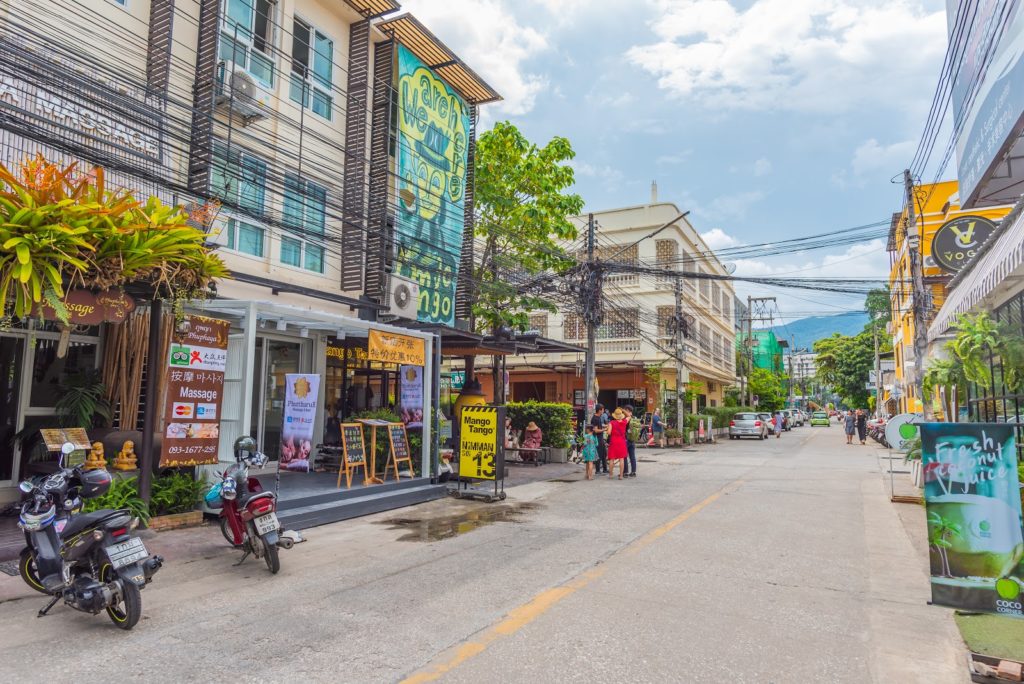
9. Exploring Hip Nimmanhaemin Street
While temples, old communities, and local dishes bombard you with the Chiang Mai feel, Nimmanhaemin Street, locally known in short as ‘Nimman,’ offers a change of ambiance. At the heart of the trendiest zone of Chiang Mai, the Nimman neighborhood comes equipped with hip restaurants, cool cafes, bars, boutique hotels, shops, and malls, all within walking distance. It’s one of the best spots to enjoy street food in the ‘Rose of the North,’ which is what Chiang Mai is also referred to as.
Visitors that come back to Chiang Mai probably won’t recognize any section of Nimman, since the street is dynamic and the surroundings can change every time you come to witness it. Hip community malls, chic arts, and crafts stores, boutique hotels, and concept coffee houses are a part of the beautiful equation you need to see for yourself to figure it out.
One Nimman shopping complex is one of the most frequently visited spots in the area, appealing with the Lanna style and European mixed architecture, making it photogenic in every corner. This new landmark in town has an area to showcase contemporary art pieces where visitors can take great pleasure. It’s an ideal location to browse for merchandise from arts and crafts to local design and handmade products, with cool bars to hang out at night.
Check out Bunthomstan Guesthouse on Nimman Lane 5. This old wooden house-turned small hotel is as homey and chic as you want a place to stay overnight to be. It’s a home away from home.

Ristr8to Lab on Nimman Lane 3 is a unique cult concept cafe striving to serve the best coffee made by a team of award-winning baristas. Not to be missed by coffee enthusiasts.

Cheevit Cheeva Fine Desserts on Lane 7 is famous for its selection of dishes for those with a sweet tooth. Check out their website here.

10. Mountain Sightseeing & Stargazing in Chiang Dao
A memorable visit to Chiang Mai is not complete without mountain sightseeing in the land of highland beauty. Chiang Dao, or ‘The City of Stars,’ is the third highest mountain in Thailand, reaching a height of 2,186 meters, lying above the Ping River gorge on the slopes of Doi Chiang Dao. Camping in the area can fulfill the wish of any stargazers as Chiang Dao is true to its name. You can expect to see countless heavenly bodies when night falls. At the same time, the resort district is quiet and picturesque, with the always cool temperature makes it one of the favorable locations among mountaineers and trekkers.
Chiang Dao is 72 kilometers north of Chiang Mai on Highway 107, about one and a half hours driving. The bus service leaving Chang Phuek bus terminal to Thaton with a stop at Chiang Dao runs between 6 AM – 6 PM daily, and it costs around 45 Baht or less than $2 USD.
Villa De View is recommended if you prefer a cozy place in a beautifully prime location for a relaxing stay. Check their Facebook fan page for more information.

11. Experiencing Elephant Care
In Thailand, elephants play an enormous part in capturing the hearts of visitors. While keeping elephants happy and well-fed takes concerted efforts from all parties involved, some sanctuaries are created to take care of our elephantine friends who are unable to live in the wild. Blessed with forests and land resources, Chiang Mai is ideal for enjoying activities with the largest land mammals on earth. There are a lot of ethical elephant camps you can experience in Chiang Mai. Here are some that we would recommend you to visit.
At the Elephant Jungle Sanctuary, one of many places to choose from, tourists can enjoy feeding, washing, and bathing with the lovely creatures. The area was set up in 2014 because of concerns over the local populations of elephants that were raised, which led to the Karen hill-tribe people and locals joining forces in successfully founding this establishment, where injured and mistreated elephants are taken good care of after being rescued. The highlight of anybody’s visit here is the mud bath for visitors who are not afraid to get muddy and join the elephants in the mud spa as they are jovially engaged in their playtime.
By nature, elephants love to swim and splash in the water and cover themselves with thick mud. This is for their skincare and for both physical and mental well-being.
For inquiries regarding the Elephant Jungle Sanctuary in Chiang Mai, send an email to chiangmai@elephantjunglesanctuary.com. Visit their website for more details.
Into the Wild Elephant Camp on Changphuek Road, and Chang Chill in Mae Wang district guarantees that visitors can indulge themselves in another unique Karen elephant experience where the mahouts demonstrate how they prepare meals with wild herbs the traditional Karen way for their jumbo friends. The former offers traditional Karen home-cooked meals, including Karen chili paste, for tourists to try as well.
Another establishment of this sort is Patara Elephant Farm, whose Elephant Day Care will widen one’s perspective regarding elephant healthcare routine and allows you to observe them interacting with family members in their natural environments.
While their conservation is based on a 4-point approach covering rescue, recovery, reproduction, and reintroduction, the farm’s activities are created for an educational and wholesome experience, starting from learning about the elephant’s health and behavior, their feeding, cleaning, and bathing.
The elephant farm is located in Hang Dong District and provides visitors with a variety of activities. Check out their website for more details. Book via email at pataraelephantfarm@hotmail.com.

12. Learning Indigo Dyeing Techniques & Supporting Women's Biz at Studio Naenna
While in Chiang Mai, there’s a good chance that you come across shops selling unique textiles since the whole Lanna Kingdom is known for various ethnic groups resulting in the origin of many types of local fabric, each with certain unique features. Inspired to revitalize the Thai local wisdom of complex handmade weaving and intricate patterning, Patricia Cheesman set up the Studio Naenna Company as the marketing arm for women’s weaving group she founded in 1986. Known as the weavers for the environment, this group aims to train and offer satisfying work to young women in the village area of the Chomthong district, South of Chiang Mai, providing them with additional income, which helps prevent them from finding work away from home. The group also researches and documents indigenous knowledge of natural dye plants, weaving methods, and cultural aspects of traditional costume and textiles. Years of communal efforts resulted in ready-to-wear garments, accessories, household items, and furnishings made from natural fibers, which are available at the Studio Naenna city showroom on Nimmanhaemin Street and its workshop studio in Soi Changkhian in Chang Phuek Sub District. In Soi Changkian, visitors can immerse themselves in the history of textiles at the founder’s collection gallery with the exhibition only open in winter (from late November to February after which the weather is too hot to put old textiles on display). Visitors can also take part in several workshop programs in textile and natural dyeing, from a few hours demonstration to full-day introduction to the textiles of Thailand and the two-half-days advance natural dye workshop. Studio Naenna is currently run by Lamorna Cheesman, Patricia’s daughter. For more information, send an email to 1@studio-naenna.com.
13. Baan Rai Kong Khing: Community-Based Tourism at its Best
Originally formed by merging two villages, Baan Rai Kong Khing has gained recognition as a community promoting health and physical well-being. Baan Rai Kong Khing highlighting its rich supply of herbs and sufficiency economy concept introduced by the late King Bhumibol Adulyadej. The awarding-winning village offers visitors a genuine agriculture-and-health-based tourism experience with local families working together to meet the needs of everyone. With some houses providing homestay accommodations for tourists to stay overnight, there are special ways visitors to the village can enjoy the community.
For instance, visitors can bike along several paths, as it is not to be missed. Visitors have to get the traditional massage local to this village. The massage is known as Yam Khang, which has been passed down the generations and involves flaming hot coals and a masseur walking on your limbs with their heated feet to soothe away tension. Cooking classes are among popular activities with one favorite local dish being Khai Pam, an egg treat cooked in banana leaves over a stove.
Located at Nong Khwai sub-district, Hangdong district, the village is sure to provide some wonderful experience that allows visitors a glimpse of and a great chance to appreciate the natural local way of life, making them feel like a home away from home whenever they visit. It won Best Community-Based Tourism Initiative at PATA Tourism InSPIRE Awards 2015 by Pacific Asia Travel Association (PATA).

How to Get There
There are countless of daily flights from Bangkok to Chiang Mai operated by THAI , Nok Air, Bangkok Airways, and Thai Smile (+662 118 8888).
EVA Air and AirAsia operates direct flights from Taipei to Chiang Mai. From Hong Kong, Cathay Pacific and Cathay Dragon fly directly. Qatar Airways flies directly from Doha to Chiang Mai.
Bus service from Mo Chit 2 Bus Terminal on Kamphaenphet Road, Chatuchak is available from early morning till late at night. Sombat Tour and Nakhonchai Air are among the top operators on the route.
Train service from the capital city’s Hua Lamphong Train Station to the Rose of the North is also a popular option. Check out this website for more details and to book different modes of transport in Thailand, including train.
The Best Way to Get Around Chiang Mai
The city center of Chiang Mai has different means of public transport that include the air-conditioned Chiang Mai Smart Bus (15-30 Baht per trip) and the famous red pick-up truck (about 30 Baht per a short trip).
Yellow pick-up trucks serve as taxis transporting passengers between districts. You can opt to go to Chiang Mai’s Arcade Bus Terminal for any long trip outside Muang district.
Grab provides a taxi service for those familiar with the ride-sharing application. Drive Hub provides car rental service with prices starting a little over 700 Baht a day. You can pick up your car at the airport following your flight to Chiang Mai. For their convenience to go up along the hilly areas which are in abundance in Chiang Mai, adventurous tourists often rent a motorbike for 250 Baht a day. Check out Funky Bike Rental’s website. Bikky Chiang Mai provides both car and motorbike rental services. Visit their website here.



